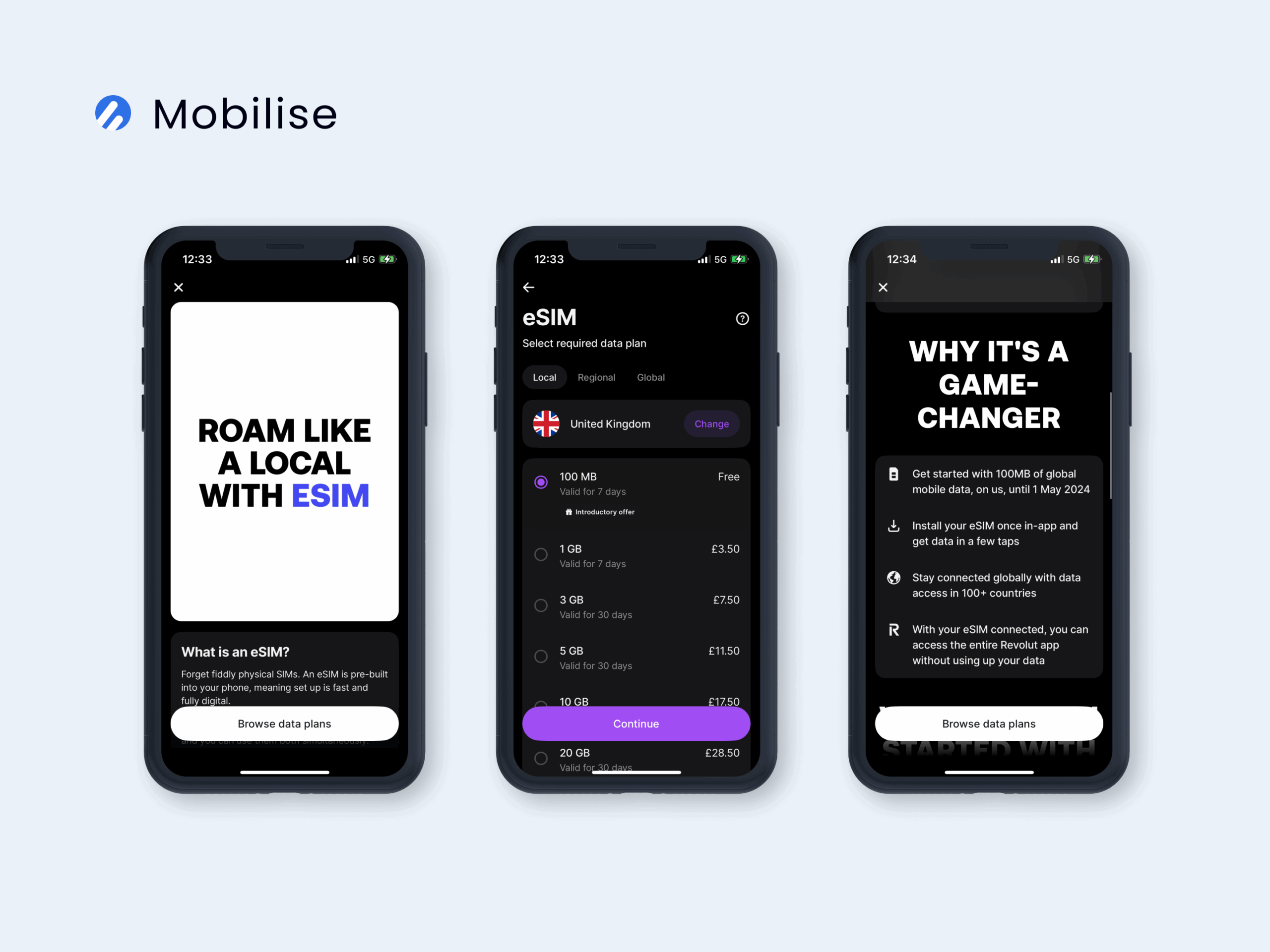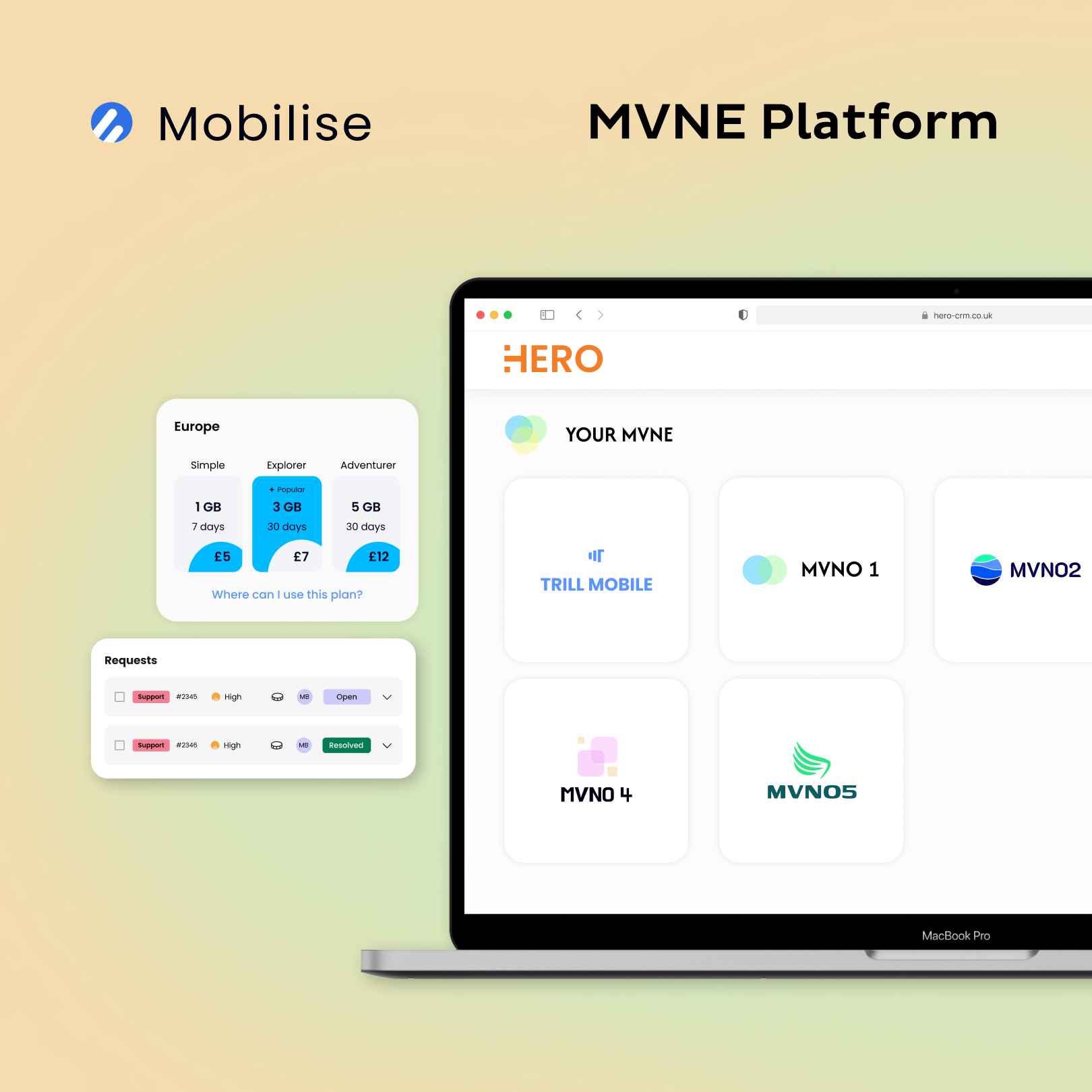Introduction
The mobile industry is undergoing a renaissance. Not in the classical art sense, but in how mobile connectivity is embedded, monetised, and consumed. The traditional MVNO (Mobile Virtual Network Operator) model is evolving rapidly, driven by demand for frictionless digital experiences, modular technology, and a new breed of digital-first brands. At Mobilise, we’ve seen this shift firsthand through the growth of our HERO® MVNE platform, a digital MVNE platform built specifically for this new era.
But this isn’t a pitch for HERO®. It’s a reflection on what’s changing, why it matters, and where the most significant opportunities lie for those ready to rethink the role of mobile connectivity.
Embedded Connectivity is not a buzzword. It’s a business model.
Hamish White, CEO of Mobilise
Embedded Connectivity and Fintech
We’re seeing Embedded Connectivity become the backbone of a new wave of services. Think of fintech apps offering roaming data, airlines offering connectivity as a loyalty perk, lifestyle brands launching their own connectivity offers, or even presidents launching their own service, like Trump Mobile, anyone? It’s not about launching “a telco”; it’s about integrating connectivity into a broader value proposition.
Revolut and Nubank are the poster children of this shift. These digital banking giants have used mobile connectivity to extend their ecosystem, deepen customer engagement, and unlock new recurring revenue streams. They’re not telcos in the traditional sense, but they’ve become operators in their own right. And they’ve done it without building legacy stacks or owning spectrum. That’s the power of digital MVNE platforms.

I believe it is safe to say that the most successful MVNOs over the next five years won’t resemble traditional telcos at all; they’ll look like fintechs, travel apps, and retail giants.
What Makes a Digital MVNE Platform Different?
Many platforms claim to be MVNEs, but many are simply legacy infrastructure wrapped in a cloud wrapper. That might be fine if you’re a legacy brand. But if you’re building a digital-first service with a strong UX, real-time control, and scalable economics, you need more than a lift-and-shift OSS and core.
Here’s what defines a truly digital MVNE platform:
- Modular Architecture – Pick and choose the components you need: eSIM, CRM, billing, self-care, provisioning, analytics. Plug in your own systems or third-party tools.
- Cloud-Native by Design – Scale up or down without infrastructure headaches. Built for agility, not legacy compatibility.
- eSIM-Centric – No more plastic SIMs. Activate instantly, embed directly in your app, and take your offer global.
- API-Driven Everything – Integrate into your app or digital backend without clunky middleware. Fast, clean, and extensible.
- Customer Experience First – A digital MVNE platform doesn’t just think about the operator; it’s designed around the end-user journey.
At Mobilise, this thinking is embedded in how we developed HERO®. It’s modular, digital-native, and built to power everything from standalone MVNOs to embedded propositions within fintech, travel, and retail applications.
Recommended Reading

The Business Value: More Than Just Connectivity
What excites me most about this space isn’t just the technology, but the innovative business models that emerge from it.
- Higher ARPU – When bundled intelligently, mobile access becomes a premium feature, not a race to the bottom.
- Deeper Engagement – Data plans, travel packs, and roaming bundles keep users inside your ecosystem.
- New Revenue Streams – Sell connectivity as a service without becoming a full-blown telco.
- Data & Insights – Mobile usage gives a deeper view into behaviour, location, and lifestyle.
For companies with strong brand equity and digital experience, mobile is becoming another lever in their customer value chain.
Recommended Reading
POV: MVNEs are no longer just enablers – they are strategic innovators
Where the MVNO Market’s Heading
We’re at an inflexion point. The traditional MVNO market, while mature in many regions, is being redefined by Embedded Connectivity and digital verticalisation.
We’re seeing growth in areas like:
- Fintech & Digital Banks – Looking to extend their ecosystem and reduce churn
- Travel & Hospitality – Offering seamless roaming or local connectivity to travellers
- Retail Brands – Using connectivity as a loyalty driver or white-labelled service
- IoT & Wearables – Needing lightweight, scalable mobile access without legacy telco overhead
The barrier to entry has never been lower, but the expectations have never been higher. That’s why platforms like HERO® exist: to enable the next generation of connectivity products quickly, cost-effectively, and with the user experience that today’s customers demand.
Recommended Reading
MVNOs and MVNEs – A Strategic Guide to Telecom Innovation and Growth
Final Thoughts: It’s Time to Rethink What an MVNO Can Be
The concept of what makes an MVNO successful is shifting. It’s no longer about owning the customer in the traditional sense of the telco industry. It’s about delivering value through connectivity in a way that supports your core product rather than distracts from it.
Whether you’re a fintech, a digital brand, or an established telco seeking to modernise, there’s never been a better time to explore what digital MVNE platforms can offer. MVNO 2.0 is about more than just reducing costs. It’s also about strategy, differentiation, and enhancing the experience. And I believe we’re only at the beginning.
As mobile connectivity becomes vital across fintech, retail, and travel, more digital-first brands are investigating opportunities. Instead of building from the ground up, many are turning to MVNO in a Box, a turnkey solution that enables quicker launches, lower costs, and reduced technical complexity.



